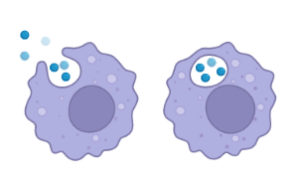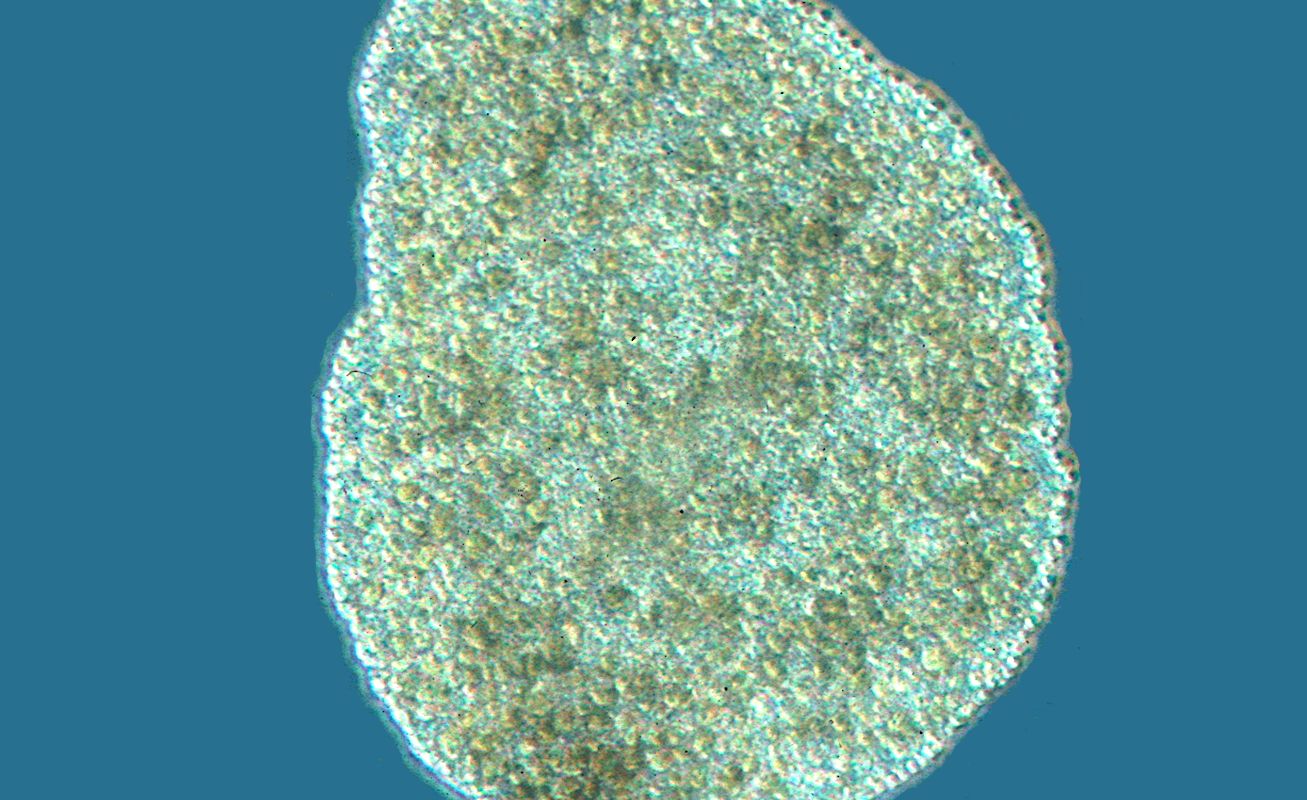This super simple animal has immune cells. What does it mean for biology?
References: Mayorova, T.D., Hammar, K., Jung, J.H. et al. Placozoan fiber cells: mediators of innate immunity and participants in wound healing. Sci Rep 11, 23343 (2021). https://doi.org/10.1038/s41598-021-02735-9
What is a Placozoa?
Imagine the simplest animal possible and you might come up with a placozoa. Placozoa means “flat animal”, an apt description for this tiny creature that resembles a small, hairy, translucent pancake that crawls along marine surfaces.
Placozoa are known to contain only four types of cells. The outside of their bodies consist of two layers of cells, which they use to move and eat. The inside of their bodies has sensory cells for orientation and fiber cells with long branching structures that hold the animal together. But now scientists have discovered that one of those cell types has another, incredibly important function.
The Mighty Macrophage
Macrophages are immune cells that engulf threats like harmful microorganisms or unhealthy cells and remove them from the body. When a macrophage zeroes in on its target, it sequesters it in a cell membrane bubble and digests it.

In one species of placozoa, researchers saw that fiber cells resembled and acted like macrophages. Some fiber cells had wrapped themselves around unhealthy-looking cells, while others contained cell debris in various stages of being broken down. Researchers also supplemented the fiber cells with bacteria. Using fluorescent dyes, they saw that fiber cells engulfed bacteria just like macrophages.
Fiber cells clean like macrophages
Macrophages are responsible for helping wounds heal. Shortly after an injury, they clean up cell debris and kill bacteria. Researchers compared fiber cell behavior in wounded and intact placozoa. In intact animals, fiber cells all remained within their bodies. But in wounded animals, lots of fiber cells were densely packed along the wound’s edge within five minutes of injury.

Studying immunity: a minimalist approach
The immune system is crucial to keeping us healthy and alive, and understanding how it works might help us fine-tune immune responses— drive faster wound healing, for example, or prevent heavy scarring. But we have many more than four types of cells, and studying a complicated process like wound healing can be difficult. As a “super simple” animal, placozoans reduce biological problems to the basics, allowing us to see which processes are absolutely fundamental to solve them. Life is a delicate balancing act, and as the placozoa exemplifies, sometimes, less is more.
Cover image: The placozoa Trichoplax. Image by B. Schierwater, licensed under Creative Commons Attribution 4.0
I’m a Ph.D. candidate in Biology at Caltech. I study animal regeneration across phylogeny— my interests include the evolution and development of weird animals and obscure science history.


